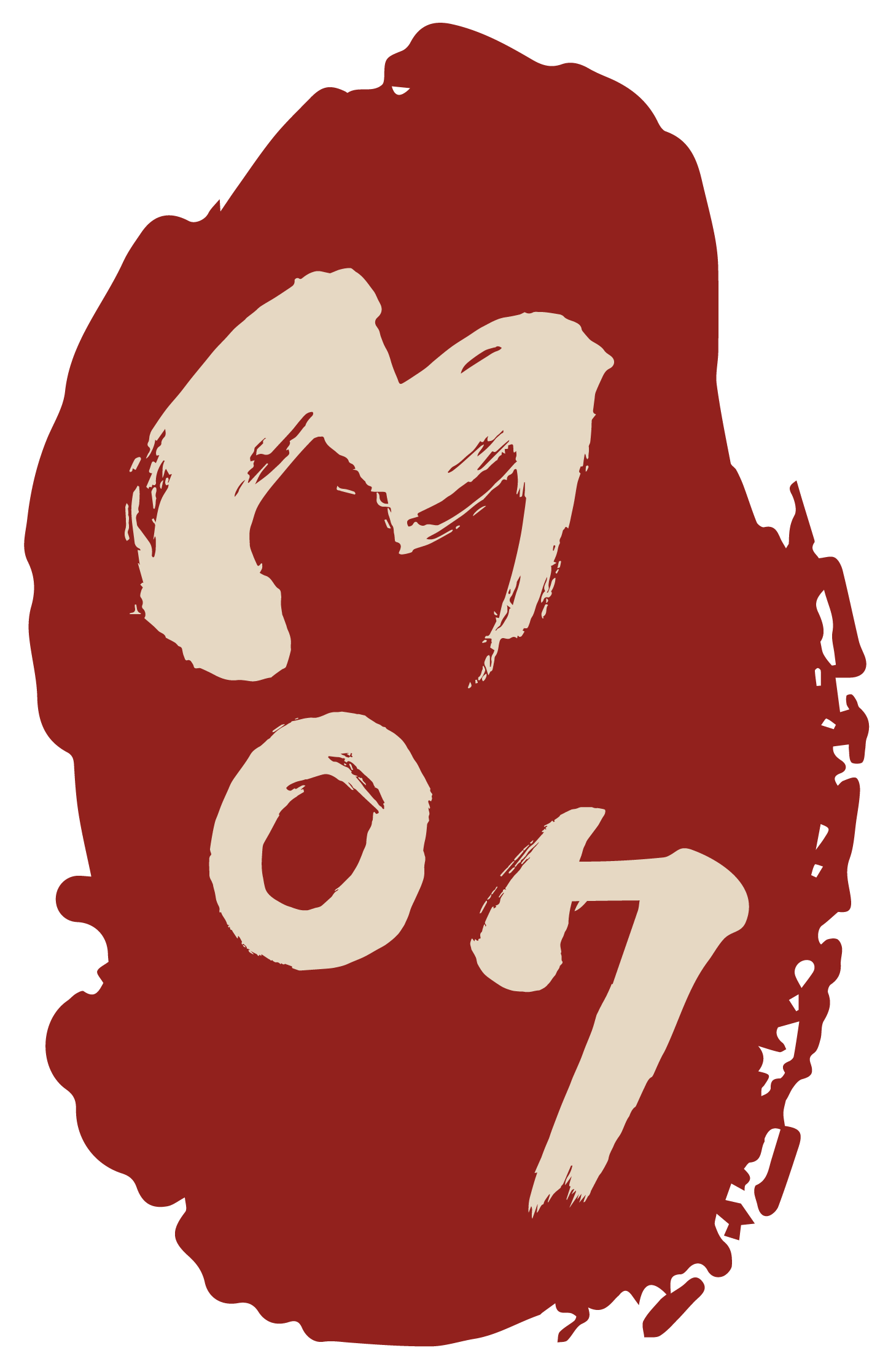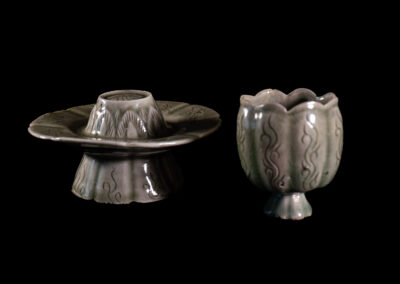Wine Cup with Saucer
Cup / Saucer
The combination consists of two parts: a wine cup and a a saucer. The ceramic cup is completely designed as a flower (tulip), the conical pedestal continues the shape over the plate. Different symbolic patterns.
Object ID
Korea_012
Age
Koryō Period, 918 – 1392 AD
Material
Ceramics
Color
Seladon green
Cup
(measures coming soon)
Saucer
(measures coming soon)
Condition
Very Good
Price
on request
Description
The combination consists of two parts, a pedestal with a plate and a tulip-shaped decorated cup. The pedestal has a conical standfoot with rounded standing areas to the base. Then follows an spacious dish-shaped plate, the standfoot of the cup is continued in the tapering shape. Inside is a round recess for adjusting the cup.
Each of the two parts is a work of art for itself, the design follows the „symbolic Eight“. [1] The lower standfoot has eight fields, each slightly curved. The plate is also assigned into eight areas. Aside from that, the cup itself has also an eight-divided standfoot and a shape of eight blossom-leaves. The inside thicker and darker green glaze gives the cup a special touch. The cup resembles an overall tulip shape. Thus completes the „principal of eight“. There is a typical decoration: The lower standfoot, the surface of the plate and the designed leaves of the body bear stylized ornaments of clouds. [2] The continuation of the base shows a wreth of lotus petals. On the one hand the pedestal and the eight-parts-cup form a unit, on the other hand the base with the saucer supports the arrangement with the beautiful cup. – On the borders of both of the items are scares from fire support.
The „Eight“, perfectly expressed in this artifact, is also a mot important symbol in other areas and cultures as for example in the wisdoms of the World Religions. The character „Eight“ is considered as e.g. the eight preciousness of Confucianism or as the eight immortals and Taoist holy saints. Often mentioned are also “eight mountains“, „eight cardinal directions“ or „eight courses of wind“. (HV)
________________________
[1] Eberhard, Wolfram (1983): Lexikon chinesischer Symbole: geheime Sinnbilder in Kunst und Literatur, Leben und Denken der Chinesen. Diederichs Verlag. Köln. 15-16
[2] Soontaek, Choi-Bae (1984): Celadon Wares of the Koryō Period (918-1392). Catalogue of the Collection at the Museum of East Asian Art, City of Cologne. Cologne. 167-168.







